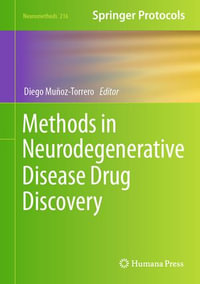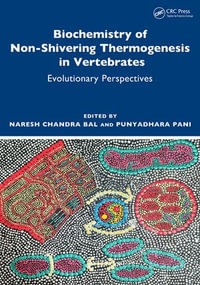
eTEXT
Analysis of Amyloid Using Various Methods
By: Josef Makovitzky, Levente Em?dy, Thomas Raul Appel, Beáta Marianna Kovács
eText | 25 March 2025
At a Glance
eText
$329.00
Instant online reading in your Booktopia eTextbook Library *
Read online on
Not downloadable to your eReader or an app
Why choose an eTextbook?
Instant Access *
Purchase and read your book immediately
Read Aloud
Listen and follow along as Bookshelf reads to you
Study Tools
Built-in study tools like highlights and more
* eTextbooks are not downloadable to your eReader or an app and can be accessed via web browsers only. You must be connected to the internet and have no technical issues with your device or browser that could prevent the eTextbook from operating.
This book explores the world of amyloid, consisting of heterogeneous deposits that have captivated scientists for decades. Amyloid, characterized by its highly organized insoluble protein fibrils exhibiting cross-layered quaternary beta-sheet structures, comprises diverse components such as the P-component, sialic acid, O-acyl sialic acid, and sGAG components. This assembly forms an anisotropic entity that induces birefringence in linearly polarized light, creating a distinctive optical signature.
Initially linked to human disease and tissue damage, the predominant idea that amyloid only harms the host has been challenged. Recent pioneering studies have uncovered the existence of functional amyloid fibers in unexpected domains, from bacteria to mammals.
Advances during the 1960s and 1970s, along with seminal immunohistochemical investigations, gave impetus to immunobiological analysis of amyloid in the 1980s. Notable work, such as the exploration of amyloid fiber staining techniques and the comprehensive study of histochemical properties, have enriched the understanding of this enigmatic deposit.
The book presents a current overview of amyloid research in health and disease, with contributions from the prestigious biennial Amyloid Forum. Written by a distinguished researcher with nearly five decades of experience, the book encompasses five meticulously elaborated chapters.
From human and animal deposits to bacterial formations, isolated fibrils, prions, and amyloid-related neurodegenerative disorders, each category of deposit is given a thorough examination. Innovative topo-optical staining techniques - polarization microscopy, fluorescence microscopy and confocal laser scanning fluorescence microscopy - reveal intricate structures in all species. Coherent structural features are authenticated by various staining reactions and different digestions.
A key segment dissects animal prion fibers, revealing their intricate architecture by topo-optical reactions and uncovering selective arrangements of components.
To complete this, the book confirms the postulated helical structure of the amyloid fiber. This innovative idea is validated by laser scanning confocal fluorescence microscopy, which reveals ordered and helically stacked amyloid protein fibrils in ?-sheet conformation. Associations with chondroitin, heparan sulfate, and looser sphingolipid linkages further unravel the structural complexities of amyloid. Also offers an insightful journey into the realm of amyloid, combining historical knowledge with cutting-edge methodologies, redefining the understanding of this intricate phenomenon.
Read online on
ISBN: 9783031707148
ISBN-10: 3031707141
Published: 25th March 2025
Format: ePUB
Language: English
Publisher: Springer Nature
You Can Find This eBook In
This product is categorised by
- Non-FictionScienceChemistryOrganic Chemistry
- Non-FictionScienceBiology, Life SciencesBiochemistryProteins
- Non-FictionScienceBiology, Life SciencesCellular Biology
- Non-FictionScienceBiology, Life SciencesMolecular Biology
- Non-FictionScienceBiology, Life SciencesBiochemistry
- Non-FictionEngineering & TechnologyMechanical Engineering & MaterialsMaterials Science
- Non-FictionScienceScience in GeneralScientific EquipmentMicroscopy
























